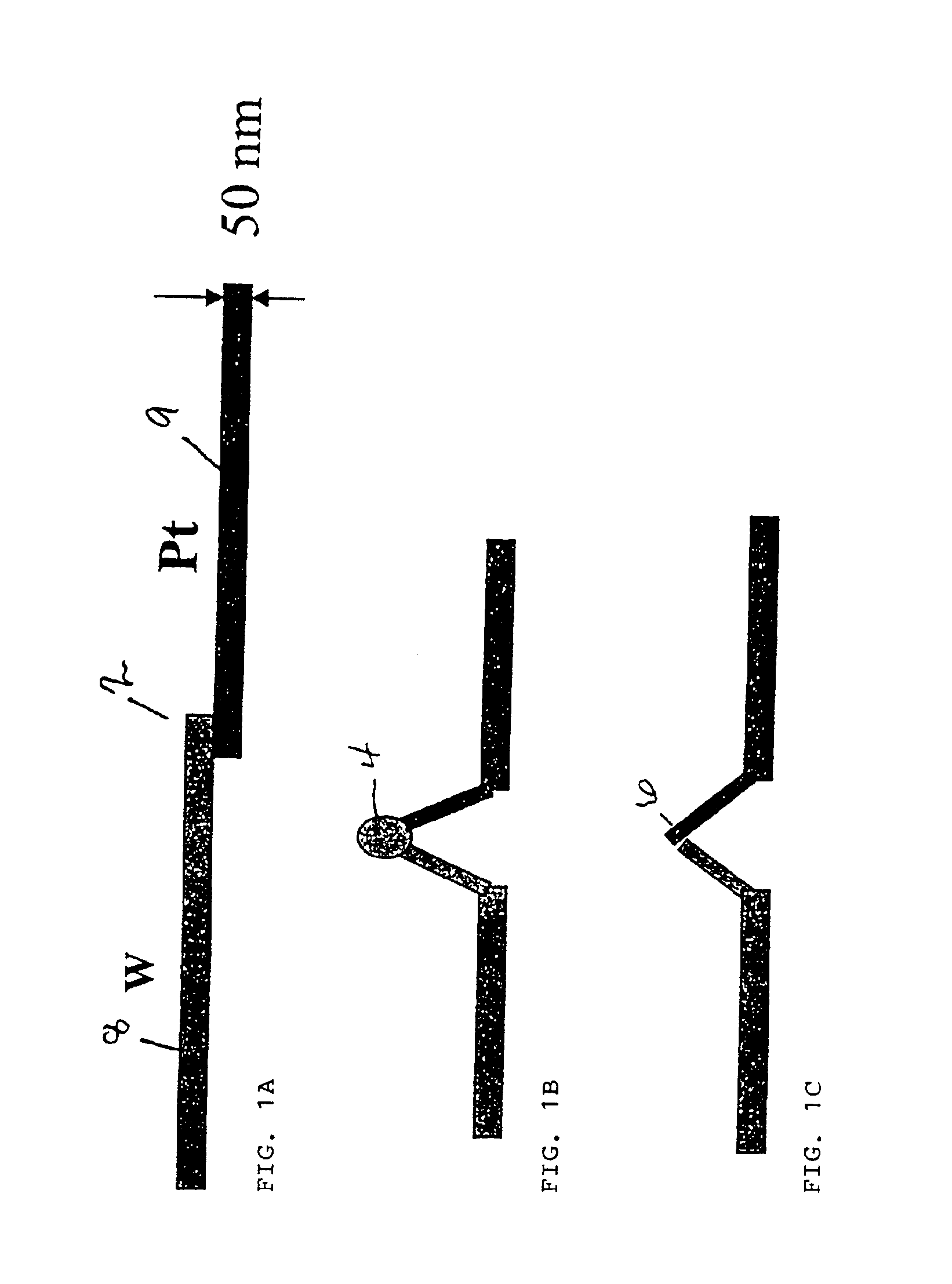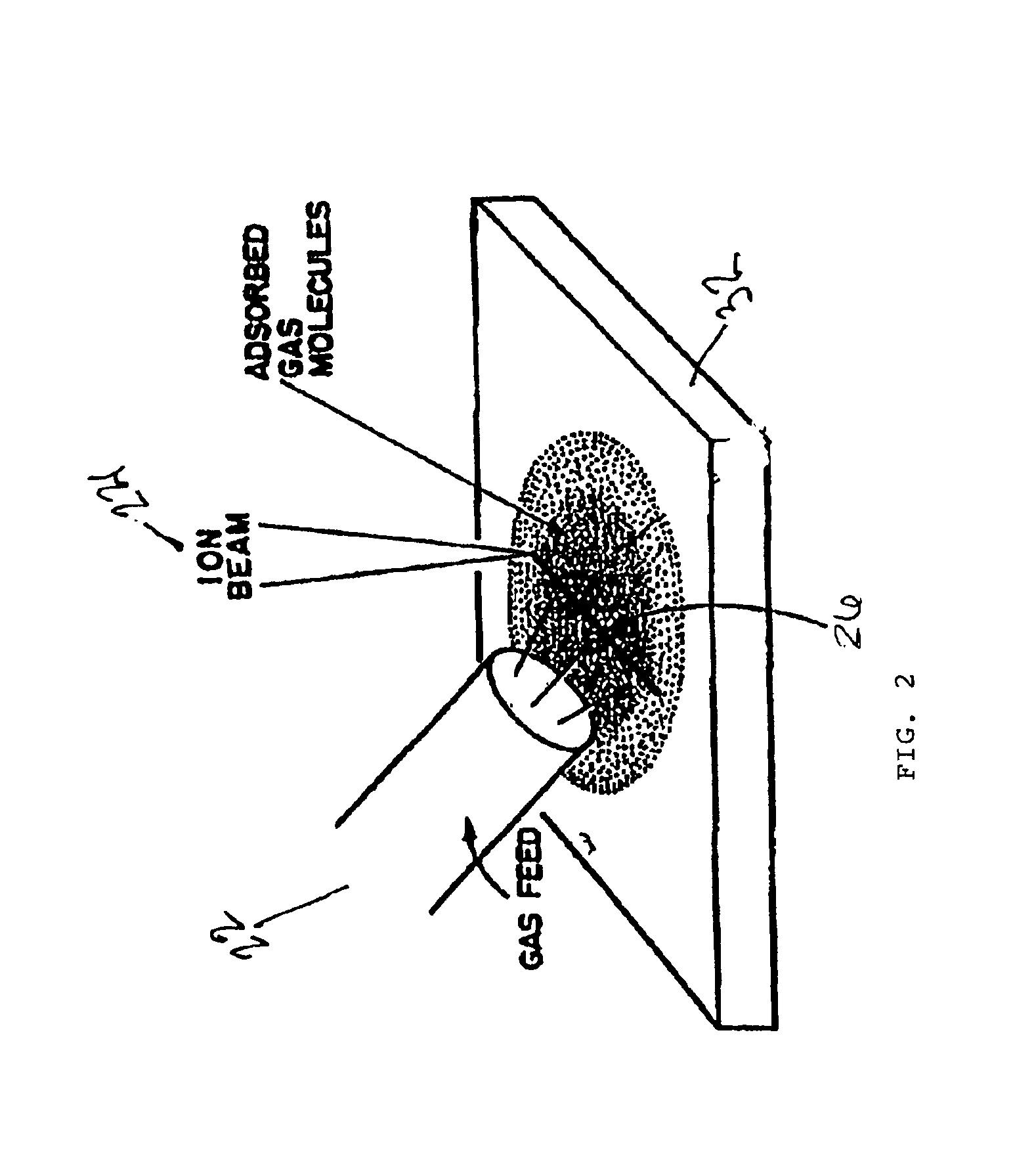Fabrication of nano-scale temperature sensors and heaters
a technology of applied in the field of fabrication of nano-scale temperature sensors and heaters, can solve the problems of inconvenient high temperature use of semiconductor diodes, inability to meet high temperature, and large size of sensors, and achieve the effect of high sensitivity
- Summary
- Abstract
- Description
- Claims
- Application Information
AI Technical Summary
Benefits of technology
Problems solved by technology
Method used
Image
Examples
Embodiment Construction
[0019]Before explaining the disclosed embodiment of the present invention in detail it is to be understood that the invention is not limited in its application to the details of the particular arrangement shown since the invention is capable of other embodiments. Also, the terminology used herein is for the purpose of description and not of limitation.
[0020]The method of the invention is based on the discovery that it is possible to create a nano-scale temperature sensor by a FIB (Focused Ion Beam) technique in which the separate nano-strips of W and Pt are deposited onto a substrate through a FIB deposition process. The junction of W and Pt nano-strips formed during the FIB process acts as a nano-scale temperature sensor. The diameters of the W and Pt nano-strips will be on the order of approximately 50 nm, and the cross-sectional area of W / Pt junction will be on the order of approximately 50×50 nm2, which will be the smallest temperature sensors that can be made so far. The ends o...
PUM
| Property | Measurement | Unit |
|---|---|---|
| thickness | aaaaa | aaaaa |
| area | aaaaa | aaaaa |
| size | aaaaa | aaaaa |
Abstract
Description
Claims
Application Information
 Login to View More
Login to View More - R&D
- Intellectual Property
- Life Sciences
- Materials
- Tech Scout
- Unparalleled Data Quality
- Higher Quality Content
- 60% Fewer Hallucinations
Browse by: Latest US Patents, China's latest patents, Technical Efficacy Thesaurus, Application Domain, Technology Topic, Popular Technical Reports.
© 2025 PatSnap. All rights reserved.Legal|Privacy policy|Modern Slavery Act Transparency Statement|Sitemap|About US| Contact US: help@patsnap.com



